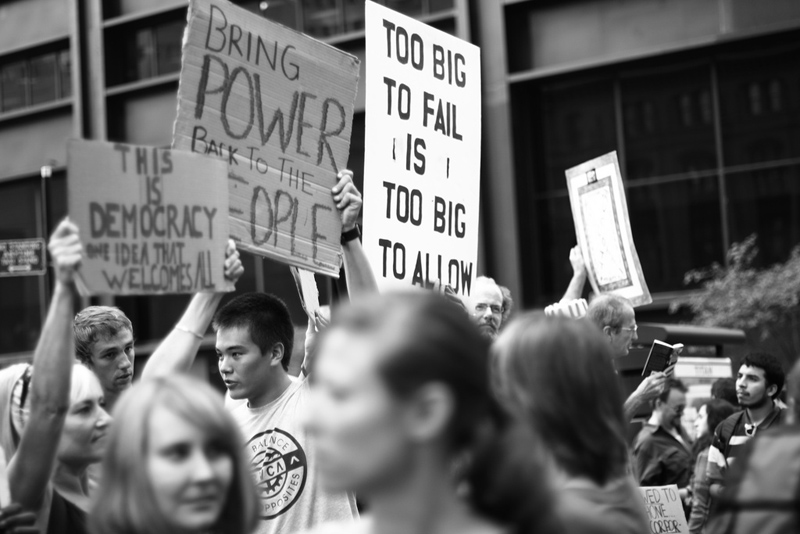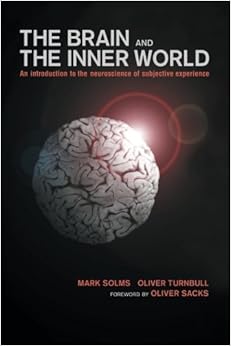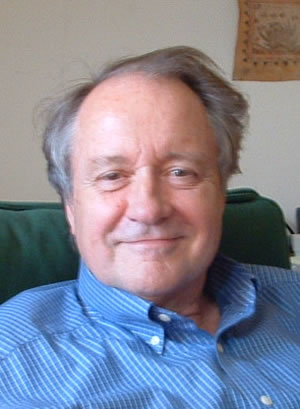Mark Solms is the author (with Turnbull) of
The Brain and the Inner World: An Introduction to the Neuroscience of the Subjective Experience (2003) and is one of the primary architects of the neuropsychoanalysis movement within the psychoanalytic field. Solms is head of the psychology department at University of Cape Town.
There are actually two distinct movements within psychoanalysis that seek to bring the field up to date with the aid of neuroscience and neurobiology - neuropsychoanalysis and interpersonal neurobiology.
Neuropsychoanalysis deals with the
dualism issue of brain and mind, inherited from Descartes, though the use of dual-aspect
monism, sometimes referred to as
perspectivism.
In essence, we are monistic - there is only one
kind of "stuff," the brain, but we can perceive this stuff in two different ways. One is the neuroscientists' "
objective" way - as an object to be dissected, imaged, and otherwise quantified. The other way is to observe "
subjectively," from inside a mind, how we feel and
what we think. Freud believed that using his "free association" technique would allow psychoanalysis to discover the mind's
unconscious functioning.
The other model,
interpersonal neurobiology, was founded by Dr. Daniel Siegel and Dr. Allan Schore, both of whom were trained as psychoanalysts but have brought that background into the field of neurobiology. Whereas the neuropsychoanalysis school is interested in understanding the functioning of the subjective mind through the use of neuroscience technology, interpersonal neurobiology is more interested in how relationships and experiences shape and structure the brain to create the subjective experience of symptoms, or what the field terms mental illness. Interpersonal neurobiology is
relational and
intersubjective to neuropsychoanalysis's
individual and
subjective.
What I have posted below is the introduction to a 14-page paper that introduces the central concepts of neuropsychoanalysis. This was clearly an authors' review copy, so there are errors and comments in the margins.
Full Citation:
Solms, M & Turnbull, OH. (2011). What is Neuropsychoanalysis? Neuropsychoanalysis; 13(2), 14 pages (pre-publication review copy).
Mark Solms & Oliver. H. Turnbull
Mark Solms: Department of Psychology, University of Cape Town, South Africa.
Oliver H. Turnbull: Centre for Cognitive Neuroscience, Bangor University, U.K.
Abstract
This article serves to briefly survey the relationship between neuroscience and psychoanalysis (“neuropsychoanalysis”) and, at the same time, to address some of the criticisms that the field has encountered. First, the article reviews the historical foundations of neuropsychoanalysis, including both theoretical and technical questions of whether an interdiscipline is appropriate. Second, the article reviews the philosophical foundations of the field, including the position of dual-aspect monism. Third, the article examines the scientific foundations of the field, with a discussion of whether analytic work with neurological patients represents an optimal point of contact between the disciplines. Finally, the article engages with the issue of what neuropsychoanalysis is not, covering issues such as “speculation versus empirical research,”and the question of whether neuropsychoanalysis represents a new “school” within psychoanalysis.
* * *
The first formal use of the term “neuropsychoanalysis” occurred in 1999, when it was introduced as the title of this journal. Plainly, however, the relationship between psychoanalysis and neuroscience is much older than the term. In the dozen years since the word “neuropsychoanalysis” was first used, it has been employed in a number of different ways, for different purposes, by different people.[1] This article briefly surveys some of this complexity and, in the process, sketches the intended scope of the field. In doing so, it will also address some of the criticisms that the field has encountered in the decade or so since its foundation.
There are two major limitations to this account. The first is that we can speak only for ourselves and thus describe what we think “neuropsychoanalysis” is—and ought to be. Nevertheless, we may claim a certain privilege in that respect, by virtue of one of us having invented the term. Second, we aim to speak only of the absolute basics of the discipline, to address only the foundational issues.
We address the question “what is neuropsychoanalysis?”under four headings:
1. Historical foundations of neuropsychoanalysis.
2. Philosophical foundations of neuropsychoanalysis.
3. Scientific foundations of neuropsychoanalysis.
4. What neuropsychoanalysis is not.
Historical foundations of neuropsychoanalysis
When we speak of the historical foundations of neuropsychoanalysis, we must of course begin with Freud. In doing so, we are also addressing the question as to whether or not neuropsychoanalysis is really a legitimate part of psychoanalysis. The alternative view is that it is somehow a foreign body in our midst, or a deviation, or perhaps even something fundamentally anti-psychoanalytic.
In relation to this question, Freud’s attitude to the issue is of paramount importance. If neuropsychoanalysis is legitimately part of what Freud conceived psychoanalysis to be, it places the interdiscipline of neuropsychoanalysis in a strong position with respect to this “parent” discipline. It was Freud, after all, who invented psychoanalysis. Happily, therefore, Freud’s view on the matter was very clear and also consistent throughout his life. Freud was, of course, a neuroscientist and a neurologist for the first two decades of his professional life (Solms, 2002; Solms & Saling, 1986; Sulloway, 1979). Throughout his later psychoanalytic work, he had a specific scientific program in mind, largely continuous with his earlier neuroscientific work, albeit shaped by the limitations of the scientific methods and techniques available to him at that time (for more on this topic, see Solms, 1998; Solms & Saling, 1986; Turnbull, 2001).
Freud’s program was to map the structure and functions of the human mind and naturally he recognized that these were intimately related to the structure and functions of the human brain. However, as regards the mapping of these relationships, he consistently argued that the brain sciences of his time did not have the tools, in both conceptual and technical terms, necessary for exploring these relationships. He therefore shifted to a purely psychological method—a shift that he reluctantly saw as a necessary expedient. Just a few quotations illustrate this position:
We must recollect that our provisional ideas in psychology will presumably some day be based on an organic substructure. . . . We are taking this probability into account in replacing the special chemical substances by special psychical forces. [Freud, 1914, pp. 78–79]
The deficiencies in our description would probably vanish if we were already in a position to replace the psychological terms by physiological or chemical ones. [Freud, 1920, p. 60]
Biology is truly a land of unlimited possibilities. We may expect it to give us the most surprising information and we cannot guess what answers it will return in a few dozen years to the questions we have put to it. [Freud, 1920, p. 60].
There are many such statements throughout Freud’s work. All reveal, firstly, that he viewed the separation of psychoanalysis from neuroscience as a pragmatic decision. Secondly, he was always at pains to clarify that progress in neuroscience would have the inevitable result that at some time in the future the neurosciences would advance sufficiently to make the gap bridgeable. As one of the quotes above suggests, his rough estimate was that this might happen in a “few dozen years.” That was in 1920.
What were the methodological limitations that Freud encountered at that time? The main neuroscientific tool then available was the clinico-anatomical method, based on the clinical investigation of patients who had suffered focal brain lesions (Finger, 1994)—that is to say, studying how different functions of the mind were altered by damage to different parts of the brain. It was effectively the only method available for studying mind–brain relationships (though Freud’s later years did briefly overlap with early developments in neurochemistry; see Finger, 1994).2 However, Freud regarded the clinico-anatomical method as unsuitable for his purposes, despite having used it himself in his preanalytic work. Best known is his On Aphasia (1891), which demonstrates how sophisticated was his mastery of that method, and of its limitations (for a modern appreciation of Freud’s early neuropsychological investigations, see Shallice, 1988, pp. 245–247).
In that 1891 book on the aphasias and in the papers that he published soon after (Solms, 2001), Freud rejected the clinico-anatomical method, as he made the transition into psychoanalysis. He did so for severalreasons. First, he recognized that the mind is a dynamic entity. It was Freud’s emphatic view, even as a neurologist (Freud, 1891), that the mind was not made up of static modules or boxes connected up by arrows. Instead, Freud saw the mind as comprising dynamic, fluid processes. Second, Freud observed that the mind consisted of far more than consciousness; there was, beneath consciousness, a vast substructure, the workings of which had to be explored and understood before we would ever be able to make sense of the volitional brain.
The aim of psychoanalysis then became to develop a method, and ultimately to derive from that method a theory (and a therapy), that would enable science to explore and understand the dynamic nature and unconscious structure of the mind. It is widely known that Freud then proceeded to use this purely clinical method, free from neuroscientific constraints, from 1895 or thereabouts, until 1939. This pioneering work left us a vast legacy, including a series of theoretical models of the basic organization of the mind, which we now refer to as “metapsychology.”
Some psychoanalysts, misreading Freud, argue that the theoretical work of psychoanalysis must continue to remain aloof from neuroscience forever. We must avoid using neuroscientific methods, no matter how far these advance, and must cling to our exclusively clinical, psychological approach. These are authors who question “whether the study of [neuroscience] contributes in any way to the understanding or development of psychoanalysis as theory or practice . . . whether neuroscience is of value to psychoanalysis per se” (Blass & Carmeli, 2007, p. 34; for a similar opinion, see Karlsson, 2010, pp. 40–64). The proponents of this view appear (fortunately, in our opinion) to form a diminishing minority,[3] but we must acknowledge that there are still some colleagues who believe that psychoanalysis has nothing to learn from neuroscience in principle. (Oddly, however, they do seem to think that neuroscience has something to learn from psychoanalysis!)
Independently of this theoretical—or ideological—question, there remains the technical question as to whether neuroscience has developed sufficiently as a discipline to allow it to make an adequate contribution to psychoanalytic theory: whether the methodological limitations (and related limitations of neuropsychological knowledge that Freud referred to) still remain. Stepping back, it is clear that there have been huge technical and methodological advances in the neurosciences over the last several decades. To offer but the briefest historical summary:
Electroencephalography (EEG) was introduced around the 1930s (Berger, 1929), though it was not fully exploited until after the war. This represented the beginning of a capability, initially rather crude, to measure and observe dynamic aspects of brain activity under changing functional conditions. The later development of event-related potentials (ERPs) in the 1960s (Sutton, Braren, Zubin, & John, 1965; Sutton, Tueting, Zubin, & John, 1967; Walter, Cooper, Aldridge, McCallum, & Winter, 1964; for a recent review, see Luck, 2005) offered substantial advances over the basic EEG technique, by virtue of experimental control and averaging procedures. The recent development of magnetoencephalography (MEG) represents a further substantial advance, allowing us to study the neural dynamics associated with mental events at the millisecond level, with increasing anatomical precision.
In another domain, after the Second World War, there were tremendous developments in neuropsychology, using the lesion method in a new way that adapted its inherent limitations to the dynamic nature of the mind. Alexander Luria, in particular, developed a method known as “dynamic localization” (Luria, 1966, 1973; see Kaplan-Solms & Solms, 2000, pp. 39–34; Solms & Turnbull, 2002, pp. 64–66). This method permitted the investigator to identify constellations of brain structures that interact to form functional systems, where each structure contributes an elementary component function to the complex psychological whole. On this basis, modern neuropsychology has a well-developed understanding of most of the basic mental functions. This applies especially to cognitive functions.
Further enormous technical advances followed the advent of computerized tomography in the 1970s, which made it possible to identify the precise location of a brain lesion while the patient was still alive. This was followed by magnetic resonance imaging (MRI). And from the 1990s onward, functional neuroimaging (functional magnetic resonance imaging, fMRI; position emission tomography, PET; and single-photon emission computed tomography, SPECT) made it possible to directly observe neurodynamic processes under changing psychological conditions.
It is now also possible to deliver temporary, short-acting “lesions” to neurologically intact research participants—either through sodium amytal injection (which was first introduced in the 1940s) or through magnetic pulses delivered to the outside of the skull via transcranial magnetic stimulation (TMS; which has been readily available since the 1990s). Innumerable other technologies also exist, ranging from stimulation of the cortical surface in neurosurgical operations (Penfield & Boldrey, 1937; Penfield & Rasmussen, 1950), to deepbrain stimulation (Mayberg et al., 2005), through to psychopharmacological probes (Ostow, 1962, 1980), to mention only the most obvious examples.
Even this brief summary demonstrates that we do now have neuroscientific methods that enable us to study the dynamic nature of the mind and to identify the neural organization of its unconscious substructure. Each of these methods has its limitations, as all methods do, and there are undoubtedly many future advances to come—but the landscape of scientific inquiry in this domain has, certainly, radically changed since Freud’s lifetime. For this reason, it seems entirely appropriate to reconsider whether we might now attempt to map the neurological basis of what we have learnt in psychoanalysis about the structure and functions of the mind, using neuroscientific methods available to us today. Freud would, in our opinion, have considered this a welcome and wholly legitimate development of the work that he pioneered, and there has been something of an explosion in the number of books addressing this issue (e.g., Bazan, 2007; Bernstein, 2011; Corrigall & Wilkinson, 2003; Cozolino, 2002; Doidge, 2008; Fotopoulou, Pfaff, & Conway in press; Kaplan-Solms & Solms, 2000; Mancia, 2006; Northoff, 2011; Peled, 2008; Shevrin, Bond, Brakel, Hertel, & Williams, 1996; Solms & Turnbull, 2002).
NOTES
1. There was a time when “depth neuropsychology” was the term used for the new interdiscipline (Kaplan-Solms & Solms, 2000, Turnbull & Solms, 2003), with reference to Freud’s “depth psychology” (Freud, 1915).
2. “The future may teach us to exercise a direct influence, by means of particular chemical substances, on the amount of energy and their distribution in the mental apparatus.” (Freud, 1939, p. 182).
3. English-Speaking Conference debate, British Psychoanalytical Society, London, 2008.
















